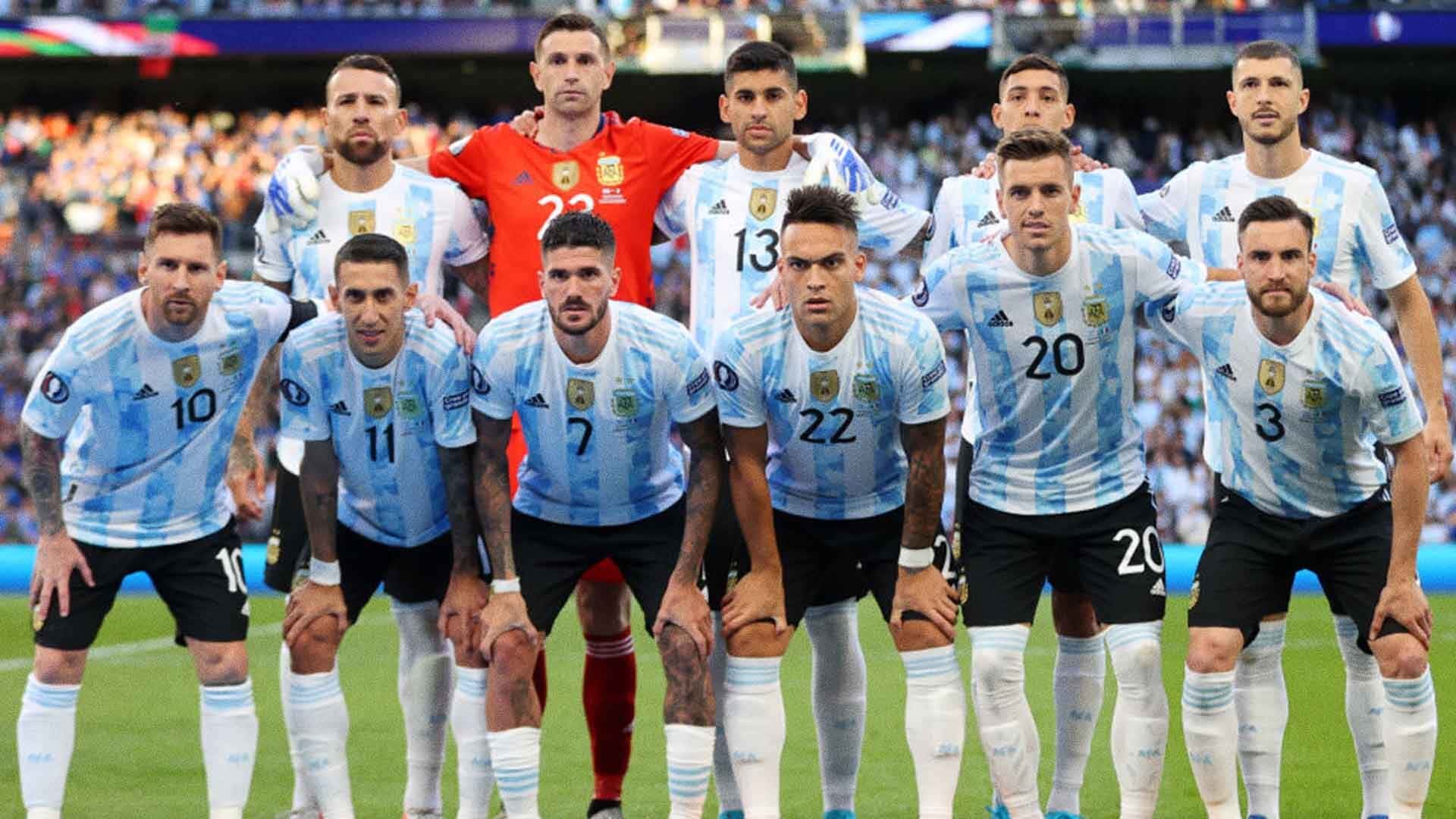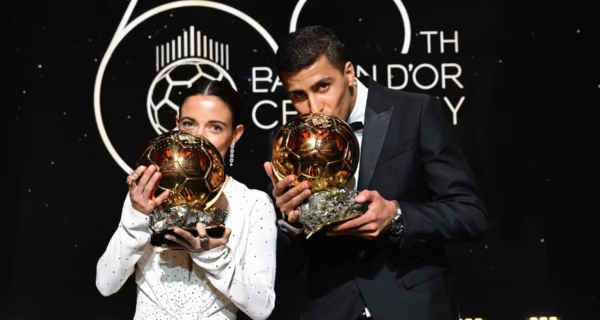Argentina produces some of the world’s wealthiest footballers, led by Lionel Messi’s staggering $850 million net worth. The South American nation has built a reputation for developing players who command top salaries across Europe’s elite leagues and lucrative endorsement portfolios.
From World Cup champions to rising stars, Argentine players consistently rank among football’s highest earners.
| Goalkeeper | Defender | Midfielder | Forward |
| Emiliano Martínez | Cristian Romero | Rodrigo De Paul | Julián Álvarez |
| Gerónimo Rulli | Nicolás Otamendi | Leandro Paredes | Nicolás González |
| Walter Benítez | Nahuel Molina | Alexis Mac Allister | Ángel Correa |
| Franco Armani | Germán Pezzella | Enzo Fernández | Santiago Castro |
| Nicolás Tagliafico | Exequiel Palacios | Giuliano Simeone | |
| Juan Foyth | Thiago Almada | Benjamín Domínguez | |
| Facundo Medina | Máximo Perrone | Ángel Di María | |
| Leonardo Balerdi | Nico Paz | Lucas Ocampos | |
| Valentín Barco | Facundo Farías | ||
| Mariano Troilo | Lucas Beltrán | ||
| Marco Pellegrino | Guido Rodríguez | ||
| Marcos Acuña | Bruno Zapelli | ||
| Gonzalo Montiel | Lucas Rodríguez | ||
| Nicolás Tagliafico | |||
| Germán Pezzella | |||
| Lisandro Martínez |
Richest Argentine Footballers and Their Net Worth
Lionel Messi dominates this list with a net worth that dwarfs his compatriots. His wealth equals roughly 340 Lamborghini Aventadors, making him one of sport’s richest athletes globally.
Beyond Messi, several Argentine stars have accumulated substantial wealth through European contracts and smart business investments, one of the highest in football net worth history.
| Player Name | Current Club | Net Worth (Est.) | Years Active |
| Lionel Messi | Inter Miami CF | $850 million | 2003-Present |
| Sergio Agüero | Retired | $80 million | 2003-2021 |
| Ángel Di María | Benfica | $40 million | 2005-Present |
| Paulo Dybala | AS Roma | $35 million | 2011-Present |
| Javier Mascherano | Retired | $30 million | 2003-2020 |
| Gonzalo Higuaín | Retired | $28 million | 2005-2022 |
| Lautaro Martínez | Inter Milan | $25 million | 2015-Present |
| Enzo Fernández | Chelsea FC | $20 million | 2019-Present |
| Julián Álvarez | Atlético Madrid | $18 million | 2018-Present |
| Alexis Mac Allister | Liverpool FC | $15 million | 2016-Present |
Messi earned $135 million in 2025 alone, ranking him the fifth-highest-paid athlete worldwide. He made $65 million from his Inter Miami salary and $70 million from endorsement deals with brands like Adidas and Apple.
His move to MLS significantly boosted his off-field earnings through unique revenue-sharing agreements.
Argentina National Team Player Salaries by Position
Argentina’s World Cup-winning squad features some of the highest-paid players in their positions globally. These salaries reflect their club contracts, not national team payments, since FIFA pays appearance fees directly.
The team’s market value exceeds €1 billion collectively, showcasing the financial power of Argentine talent.
Goalkeepers
Emiliano Martínez earns approximately $7.8 million annually at Aston Villa, making him one of football’s highest-paid keepers. His market value sits at €20 million despite being 31 years old.
Franco Armani, playing domestically for River Plate, earns considerably less at around $1.5 million per year.
Defenders
Cristian Romero commands $8.5 million yearly at Tottenham Hotspur, with a market value of €50 million. Lisandro Martínez earns similar figures at Manchester United, valued at €40 million.
Young defender Facundo Medina at Marseille makes around $3 million annually with a €25 million market value.
Midfielders
Enzo Fernández leads Argentine midfielders with $9.3 million per year at Chelsea, boasting a €75-79 million market value. Alexis Mac Allister earns $7.8 million at Liverpool and holds a €100 million valuation, making him Argentina’s joint-most valuable player.
Rodrigo De Paul at Atlético Madrid makes approximately $6 million annually.
Forwards
Messi’s $65 million salary dwarfs other Argentine forwards, though he’s now 38 years old. Lautaro Martínez earns around $8 million yearly at Inter Milan with a €92-95 million market value.
Julián Álvarez makes $5.8 million at Atlético Madrid after his big-money transfer, valued at €100 million.
How Argentine Players Build Their Wealth
Club salaries form the foundation of Argentine players’ wealth, with Europe’s top leagues paying significantly more than anywhere else. A player moving from Argentina’s Primera División to the Premier League can see his salary increase 10-15 times overnight.
This wage gap explains why most top Argentines leave domestic football by age 22.
Main Revenue Sources:
- Club Salaries: Europe’s elite leagues pay €5-10 million annually for top players
- Endorsement Deals: Major stars earn €20-70 million from brand partnerships
- Image Rights: Players keep a percentage of merchandise and media appearances
- Investments: Real estate and businesses back in Argentina
- Social Media: Direct-to-fan revenue through sponsored posts and content
Endorsement deals provide massive income boosts for established stars like Messi, who earns more off the field than on it. He has partnerships with Adidas (a lifetime deal worth an estimated $1 billion), Apple TV, Pepsi, and Budweiser.
Even younger players like Enzo Fernández and Alejandro Garnacho are securing deals with sportswear brands and watch companies.
Domestic League vs. International Earnings
Argentina’s Primera División pays modest salaries compared to Europe’s elite leagues. The highest earner domestically, Marcos Rojo at Boca Juniors, makes £2.34 million ($3 million) per year.
That figure is less than what backup players earn at mid-table Premier League clubs.
| League | Average Top Player Salary | Example Player | Wage Bill Comparison |
| Premier League | $8-10 million | Romero, Mac Allister | €500M+ total |
| La Liga | $6-8 million | De Paul (Atlético) | €300M+ total |
| Serie A | $7-9 million | L. Martínez (Inter) | €250M+ total |
| Argentine Primera | $2-3 million | Rojo (Boca) | €21M total |
Boca Juniors, Argentina’s richest club, has a total annual wage bill of just £17.09 million ($21 million). Manchester United pays Lisandro Martínez alone nearly half that amount each season.
This massive wage gap forces Argentina’s best young talent to seek European transfers as soon as possible. Players who stay in Argentina typically do so at the end of their careers or due to family reasons.
River Plate and Boca Juniors can occasionally match South American league salaries, but cannot compete with European offers.
Argentine Players’ Market Value Compared to Net Worth
Market value measures what clubs would pay to transfer a player, while net worth represents total accumulated wealth. Alexis Mac Allister has a €100 million market value but an estimated $15 million net worth since he’s only 26 and early in his career.
Conversely, retired players like Sergio Agüero have lower market values (zero) but high net worth from career earnings.
| Player | Age | Market Value | Net Worth | Primary Source |
| Messi | 38 | €18 million | $850 million | Career earnings + endorsements |
| Mac Allister | 26 | €100 million | $15 million | Current salary |
| Enzo Fernández | 24 | €75 million | $20 million | Recent big contract |
| Agüero | Retired | €0 | $80 million | Career accumulation |
Endorsement deals significantly boost net worth beyond what market value suggests. Messi’s market value sits at just €18 million due to his age, but his net worth is $850 million from two decades of top salaries and endorsements.
This gap shows why looking only at market value misses the bigger wealth picture.
Young players like Enzo Fernández (€75 million market value, $20 million net worth) will see their wealth grow substantially if they maintain performance levels. His €121 million transfer fee to Chelsea created a massive contract, but he’s still building his net worth.
Players who secure long-term endorsement deals often surpass their playing salaries in total career earnings.
Legendary Argentine Players’ Net Worth
Diego Maradona accumulated an estimated $100 million net worth during his career, though legal issues reduced it before his death in 2020. Playing in the 1980s-90s, he earned far less in salary than modern players but pioneered lucrative endorsement deals.
His Naples contract made him one of football’s first $5 million-per-year players.
Gabriel Batistuta retired with approximately $50 million in net worth after earning top salaries at Fiorentina and Roma in the 1990s-2000s. His earnings showed how Serie A dominated football finances before the Premier League explosion.
Batistuta also invested wisely in Argentine real estate and cattle ranching.
| Legendary Player | Era | Estimated Career Net Worth | Peak Salary |
| Diego Maradona | 1980s-90s | $100 million | $5 million/year |
| Gabriel Batistuta | 1990s-2000s | $50 million | $8 million/year |
| Juan Román Riquelme | 2000s-2015 | $25 million | $4 million/year |
Juan Román Riquelme, who retired in 2015, has an estimated $25 million net worth despite playing most of his career at Boca Juniors. He earned his biggest salary during a brief Villarreal stint but chose to return home for lower wages.
His case illustrates how staying in Argentina limits wealth accumulation compared to European-based careers.
The wealth gap between Maradona’s generation and today’s stars is enormous. Messi earns more in one year than Maradona made in his entire career.
This reflects football’s commercial explosion, massive television deals, and globalized sponsorship opportunities. Modern players also benefit from social media, creating direct-to-fan revenue streams unavailable to earlier generations.
FAQs
1. Who is the richest Argentine footballer?
Lionel Messi holds this title with an $850 million net worth accumulated through 20+ years of elite salaries and endorsements. He ranks among the world’s richest athletes across all sports.
2. What is Lionel Messi’s net worth?
Messi’s net worth stands at approximately $850 million, with annual earnings of $135 million from his Inter Miami salary and global brand partnerships. His wealth continues to grow despite being 38 years old.
3. How much do Argentina national team players earn?
National team players earn their club salaries, which range from $3 million for domestic-based players to over $9 million for Europe’s top stars. FIFA pays appearance bonuses separately for international matches.
4. How do Argentine player salaries compare to Brazilian players?
Brazilian players in Europe earn similar amounts to Argentines in equivalent positions, though Brazil’s domestic league pays slightly higher wages. Both nations dominate South American football wealth.
5. How much does the average Argentine footballer make?
Players in Argentina’s top division average around £200,000-300,000 annually, while those in lower divisions make £30,000-80,000. This is comfortable in Argentina but far below European standards.













